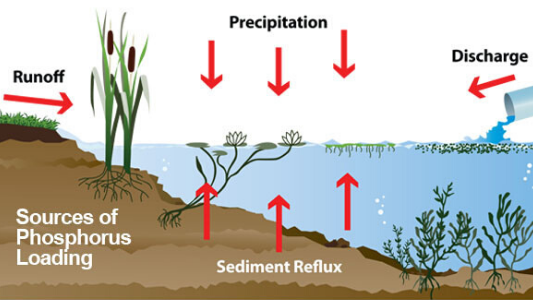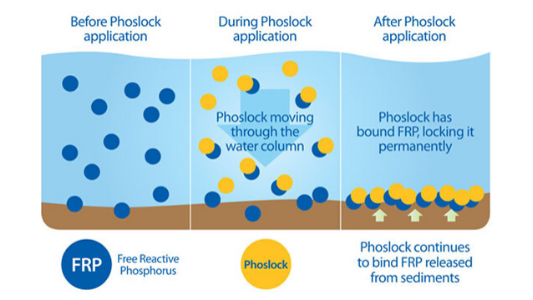A Proven Solution for Reducing Phosphorus Pollution in Ponds
What Happens As Ponds Age?
All ponds go through a natural aging process called eutrophication. This process is accelerated in many developed watersheds (i.e. urban, agriculture) due to the loading and accumulation of excess phosphorous in the pond water and sediments.
Can Phosphorus Be A Pollutant?
When excess phosphorus begins to have undesirable impacts to the balance and health of aquatic ecosystems, the negative impacts to water quality may be considered a form of pollution. Even when external sources of phosphorus have been curtailed by watershed management practices (i.e. reduced lawn fertilizers, shoreline buffers, stormwater management, improved agriculture practices), the years of accumulation and internal recycling of phosphorus in ponds can continue to degrade water quality for years to come.

What Can Be Done?
Reduce phosphorus in the pond to restore and sustain better water quality. Break the cycle of internal phosphorus loading with the proven phosphorus locking technology Phoslock. This technology has a high affinity to bind and permanently inactivate phosphorus in natural and man-made water bodies. Phoslock provides an effective and environmentally compatible solution to reduce phosphorus pollution and restore water quality.

Take Action This Spring!To implement a phosphorus pollution program and put your pond on a path to recovery this Spring, contact us today!
Contact SOLitude Lake Management to speak with an expert biologist, ecologist or scientist for all of your lake, pond and fisheries management needs. 888-480-5253 or [email protected]. Services available in VA, NC, SC, MD, PA, DE, WV, NJ & NJ. Aquatic products and consultation are available nationwide.










